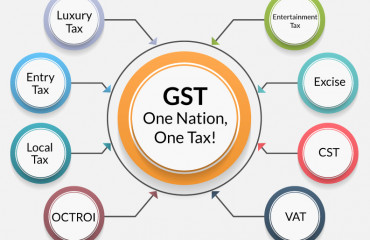
India’s fiscal deficit widened to touch 21% of the budget target for the fiscal year in the first quarter of 2022-23 after capital expenditure increased sharply but overall revenue recorded only a moderate rise.
India's fiscal deficit widened to touch 21% of the budget target for the fiscal year in the first quarter of 2022-23 after capital expenditure increased sharply but overall revenue recorded only a moderate rise.
This comes amid an anticipated rise in the government's subsidy burden due to the depreciation of the rupee, and a decline in excise and customs duty mop-up.
Growth in the eight core infrastructure sectors of the economy remained in double digits in June, but moderated from its 13-month high, seen in May.
All sectors barring crude oil posted growth, helped by the low base of the previous year. The sectors—coal, crude, natural gas, refinery products, fertilizers, cement, steel and electricity —expanded by 12.7% in June, compared with 19.3% in May, data released by the ministry of commerce and industry showed on Friday.
Coal, electricity, cement and refinery products posted double digit growth in output. With the eight core industries holding a 40.27% weight in the Index of Industrial Production (IIP), this raised prospects of a robust industrial production performance.
The gap between the government's revenue and expenditure at ₹3.51 trillion during the first quarter is 28% higher than the corresponding period last year, data released by the controller general of accounts released on Friday showed. The fiscal deficit for April-June was 21.2% of the budget target of ₹16.6 trillion set for FY23, as against 18.2% in the first quarter last year.
The deficit for June at ₹1.47 trillion is 2.6% lower than the same month of the previous year.
Economists said risks to the fiscal deficit target 6.4% of GDP for FY23 arise from revenue losses on account of excise duty cut, lower-than-budgeted transfer of the RBI's surplus, and the need for additional spending on food, fertiliser, and LPG subsidies.
But, they said, the windfall tax on crude oil and other export duties along with the buoyancy in GST and higher-than-expected nominal GDP due to high inflation may help.
The government contained the fiscal deficit for 2021-22 to 6.7% of gross domestic product in 2021-22, better than the 6.9% estimated in the budget, largely on the back of higher-than- expected revenue mop-up and nominal GDP growth. Fiscal deficit arises when government spending exceeds revenue. Revenue receipts in the April-June period at ₹5.68 trillion are merely 5.1% higher compared with last year, on the back of halving of non-tax revenue.
Revenue receipts have touched 25.8% of the full year's target compared with 30.2% in the first quarter of 2021-22.
"We expect a large part of the higher-than-budgeted subsidies and loss related to the excise duty cut to be absorbed by higher-than-estimated non-excise taxes, limiting the extent of the overshoot in the GoI's fiscal deficit in FY2023 relative to the budget estimates at ₹0.3 trillion- ₹0.8 trillion. Unless the free foodgrain scheme is extended beyond September 2022, we do not expect the fiscal deficit to exceed 6.4% of GDP based on a nominal GDP growth assumption of 15%," said Aditi Nayar, chief economist, Icra Ltd.
The total expenditure during this period at ₹9.47 trillion is 15.3% higher compared to last year. Capital expenditure, which is used to create assets like infrastructure and acts as a multiplier, was up 57% year-on-year at ₹1.75 trillion. It is 23.4% of the full year's estimate as against 20.1% in the corresponding period last year.
However, revenue expenditure, which comprises fixed obligations or ongoing operating expenses such as salaries and pension, was up 8.4% at ₹7.7 trillion compared with last year's ₹7.1 trillion.
